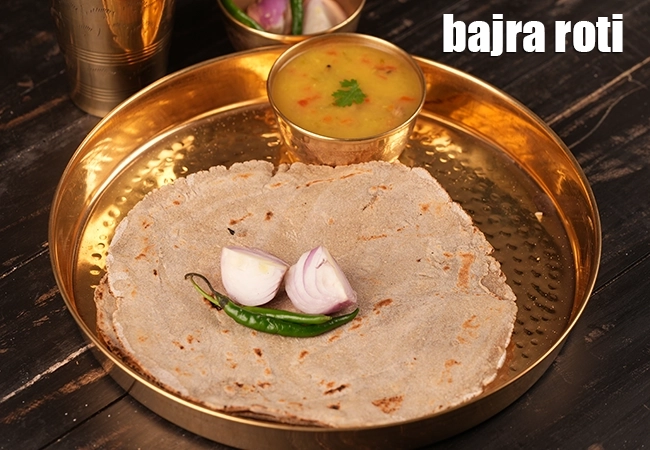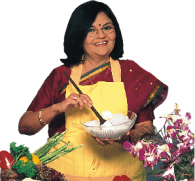Nutritional Facts of yellow moong dal recipe | healthy moong dal | zero oil dal recipe | Indian moong dal for weight loss | zero oil dal recipe | Calories in yellow moong dal recipe | healthy moong dal | zero oil dal recipe | Indian moong dal for weight loss | zero oil dal recipe |
This calorie page has been viewed 113369 times

Table of Content
How many calories does one serving of Yellow Moong Dal have?
One serving of Yellow Moong Dal gives 72 caories. Out of which carbohydrates comprise 50 calories, proteins account for 19 calories and remaining calories come from fat which is 3 calories. One serving of Yellow Moong Dal provides about 4 percent of the total daily calorie requirement of a standard adult diet of 2,000 calories.
72 calories for 1 serving of Yellow Moong Dal, Cholesterol 0 mg, Carbohydrates 12.6g, Protein 4.8g, Fat 0.3g.
Nutrition Facts of Yellow Moong Dal
¼ Cup of raw Yellow Moong Dal is about 50 grams RDA stands for Recommended Daily Allowance. Energy - 174 calories Protein – 12.2 g Carbohydrate – 29.5 g Fat – 0.6 g Fiber – 4.1 g Vitamins: 0.24 mg of vitamin B1 (Thiamine) = 15% of RDA (about 1.2 to 1.6 mg for men) 0.11 mg of vitamin B2 (Riboflavin) = 5.78% of RDA (about 1.4 to 1.9 mg for men) 1.2 mg of Vitamin B3 (Niacin) = 5.7% of RDA (about 16 to 21 mg for men) 70 mcg of vitamin B9 (Folate) = 70% of RDA (about 100 mcg) Minerals: 37.5 mg of Calcium = 3.75% of RDA (about 1000 mg) 1.95 mg of Iron = 9.75% of RDA (20 mg for women) 55.5 mg of Magnesium = 15.85% of RDA (about 350 mg) 575 mg of Potassium = 12.2% of RDA (about 4700 g) 1.4 mg of zinc = 11.6% of RDA (10 to 12 mg)
See Yellow Moong Dal recipe. healthy moong dal | Indian moong dal for weight loss is appealing though it encompasses simplicity. Learn how to make healthy moong dal.
To make spicy yellow moong dal, clean, wash and soak the yellow moong dal in enough water in a deep bowl for 15 minutes. Drain and keep aside. Combine all the ingredients along with the yellow moong dal and 1½ cups of water in a pressure cooker, mix well and pressure cook for 2 whistles. Allow the steam to escape before opening the lid and whisk well. Add ¼ cup of water, mix well and bring to boil. Serve hot.
This Spicy Yellow Moong Dal is so tasty you will want to make it every day, and you can – because it is so simple and easy-to-make. Unlike traditional methods of making dal with a ghee-loaded tempering, this healthy moong dal is made without any oil and yet tastes the same.
Moong Dal is a storehouse of nutrients like protein, iron and folic acid, so you can relish this dal without any guilt of putting on extra kilos and with the satisfaction of providing your body machinery with required nutrients. This Indian moong dal for weight loss is a wise choice for diabetics and heartpatients too!
Is Yellow Moong Dal healthy?
Yes, this is healthy.
Let's understand the Ingredients.
What's good.
1. Yellow Moong Dal : The fibre (4.1 g in ¼ cup) present in yellow moong dal prevents the deposition of bad cholesterol (LDL) in the arteries which promotes a healthy heart in turn. Packed with nutrients like zinc (1.4 mg), protein (12.2 mg) and iron (1.95 mg), yellow moong dal helps to maintain the elasticity of your skin and help to keep it moist. Fiber, potassium and magnesium from yellow moong dal will work together to regulate blood pressure and soothe the nerves and is diabetic friendly. See here for details of 7 amazing benefits of yellow moong dal.
2. Onions (pyaz, kanda) : Raw onions are a very valuable source of vitamin C – the immune building vitamin. Along with other phytonutrients from onions, it helps to build WBC (white blood cells) which serves as a line of defence against illness. Yes, it’s a source of many antioxidants, the most important one amongst them being Quercetin. The quercetin which promotes production of HDL (good cholesterol) and lowers total cholesterol in the body. The sulphur in onions act as a blood thinner and prevents blood clotting too. This in turn would lower blood pressure and good for heart, diabetics. Read the benefits of onions.
3. Tomatoes : Tomatoes are extremely rich source of Lycopene. Tomatoes are a powerful antioxidant, super rich in Vitamin C, good for heart. Tomatoes are a Pregnant women's friend and are rich in Folate or Folic Acid which helps your body to produce and maintain new cells, especially red blood cells. Read about 13 amazing benefits of tomatoes.
4. Garlic : Garlic has been proven to lower cholesterol. The active ingredient allicin present in garlic aids in lowering blood pressure. Garlic is also alleged to help regulate blood glucose levels for diabetics. Garlic is great for the heart and circulatory system. Read here for complete benefits of garlic.
Can diabetics, heart patients and over weight individuals have Yellow Moong Dal?
Yellow Moong Dal is an excellent food choice for those managing diabetes, heart health, and blood pressure. This humble lentil is naturally low in fat and high in protein, making it a light yet nutrient-dense option. Its low glycemic index helps regulate blood sugar levels, preventing sudden spikes after meals—ideal for diabetics. The presence of dietary fiber in yellow moong dal aids digestion and improves insulin sensitivity. Cooking it with minimal oil and moderate salt, as in this spicy yellow moong dal recipe, makes it both delicious and health-friendly. Ingredients like garlic, ginger, and turmeric add antioxidant and anti-inflammatory properties, which further benefit blood sugar controland metabolic health.
For heart and blood pressure health, yellow moong dal is equally valuable. It is rich in potassium and magnesium, minerals known to help maintain normal blood pressure and support heart function by balancing the effects of sodium. The inclusion of onions, tomatoes, and spices like garam masala and green chillies enhances flavor without adding unhealthy fats. Since the recipe limits salt, it helps manage hypertension while providing warmth and satisfaction. In short, this protein- and fiber-rich yellow moong dalis a simple, wholesome dish that supports cardiac wellness, stable blood sugar, and balanced blood pressure—a true comfort food for good health. 💛
Can healthy individuals have Yellow Moong Dal ?
Yes. Combine dal with bajra roti, jowar roti, radish nachni roti recipe , basic ragi roti recipe, and whole wheat roti to make a healthy combination. Note that when you combine any dal with any cereal like bajra, jowar, ragi, buckwheat, barley or whole wheat to enhance the protein value.
bajra roti recipe | bajre ki roti | healthy pearl millet roti | Rajasthani bajra roti | Sajje Roti |
Bajra Roti is an excellent choice for individuals aiming to lower blood pressure primarily because bajra (black millet) flour is rich in dietary fiber and magnesium. The high fiber content, combined with a small amount of whole wheat flour, is effective in sweeping out excess cholesterol and fat from the body, thereby preventing the clogging of blood vessels and easing blood flow. Furthermore, the magnesium in bajra helps relax the walls of the blood vessels, which directly contributes to lowering blood pressure. To maximize these benefits, the recipe should restrict salt (sodium) intake, which is crucial for managing hypertension, and use a minimal amount of ghee (4 tsp for 8 rotis) to keep the overall fat and calorie content low, supporting a heart-healthy diet.

Yellow moong dal is rich in below macronutrients, vitamins and minerals given in descending order (highest to lowest).
- Folic Acid (Vitamin B9): Folic acid is an essential vitamin required throughout pregnancy. Folic acid rich Indian foods (kabuli chana, chana dal, yellow moong dal, urad dal, tooval dal, til ). 15% of RDA.
- Vitamin B1 (Thiamine) : Vitamin B1 protects nerves, helps in carbohydrate metabolism, prevents heart diseases and helps produce red blood cells. 10% of RDA.
- Protein : Protein is required for the managing the wear and tear of all cells of the body. Have protein rich Indian foods like paneer, curd, Greek yoghurt, tofu, almonds, sprouts, chana, rajma, chick peas, quinoa, buckwheat ). 9% of RDA.
- Vitamin C : Vitamin C is a great defence against coughs and colds. Have citrus fruits, lemons, vegetables ( capsicum, broccoli, cabbage). 9% of RDA.
How to burn 72 calories that come from Spicy Yellow Moong Dal?
Walking (6 kmph) = 22 mins
Running (11 kmph) = 7 mins
Cycling (30 kmph) = 10 mins
Swimming (2 kmph) = 12 mins
Note: These values are approximate and calorie burning differs in each individual.
| Value serving | % Daily Values | |
| Energy | 72 kcal | 4% |
| Protein | 4.8 g | 8% |
| Carbohydrates | 12.6 g | 5% |
| Fiber | 1.77 g | 6% |
| Fat | 0.26 g | 0% |
| Cholesterol | 0.0 mg | 0% |
| VITAMINS | ||
| Vitamin A | 43.6 mcg | 4% |
| Vitamin B1 (Thiamine) | 0.1 mg | 8% |
| Vitamin B2 (Riboflavin) | 0.0 mg | 2% |
| Vitamin B3 (Niacin) | 0.5 mg | 4% |
| Vitamin C | 3.5 mg | 4% |
| Vitamin E | 0.0 mg | 0% |
| Folic Acid (Vitamin B9) | 30.0 mcg | 10% |
| MINERALS | ||
| Calcium | 22.8 mg | 2% |
| Iron | 0.9 mg | 4% |
| Magnesium | 23.5 mg | 5% |
| Phosphorus | 6.9 mg | 1% |
| Sodium | 6.8 mg | 0% |
| Potassium | 243.2 mg | 7% |
| Zinc | 0.6 mg | 3% |
Percent Daily Values are based on a 2000 calorie diet. Your daily values may be higher or lower depending on your calorie needs.

Click here to view Spicy Yellow Moong Dal, Healthy Indian Moong Dal
Calories in other related recipes















